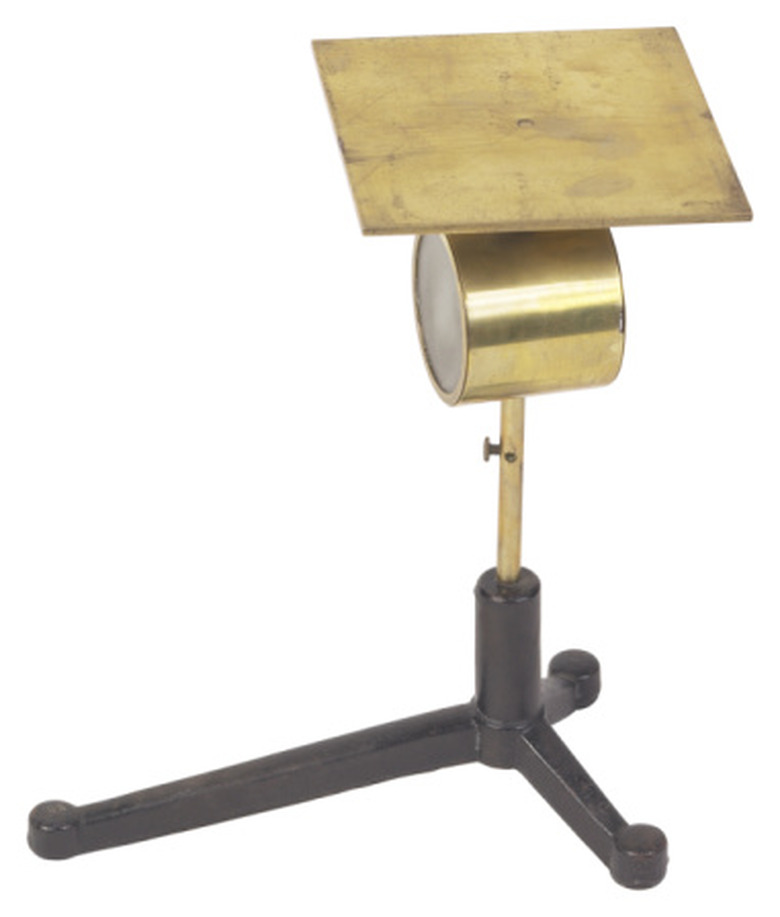Uses Of Gold Leaf Electroscopes
The gold leaf electroscope has been used by physicists for hundreds of years. It indicates the presence and magnitude of a charge through the application of charge to a copper top plate connected through a stem to two pieces of gold leaf. The movement of one piece of gold leaf away from the other shows that the electroscope is charged. The gold leaf is sealed in a glass case to prevent accidental movement induced by air currents. The stem passes through insulation so that charge cannot escape from the gold leaf.
Net Charge
Net Charge
Electroscopes can show the relative charge of an object through the movement of the gold leaves inside. As the gold leaves gain more positive or negative charge, they spread out. To demonstrate this, place a charged object near the electroscope. The object can be something as simple as a polythene rod that has been rubbed with a cloth. By moving the charge near the electroscope's top plate, it acquires the opposite charge of the object. The closer the object is brought, the greater the separation will be seen inside.
Transferring Charge
Transferring Charge
By touching the top plate of the electroscope with a charged object, the charge is itself transferred to the electroscope. This results in the gold leaves having the same charge and therefore being repelled from each other. When the object is removed, the electroscope will continue to hold the charge.
Determining Charge
Determining Charge
If the experimenter knows the charge held in the electroscope to be, say, negative, she may then determine the charge of an unknown object brought near it by watching the movement of the gold leaves. If the object is negatively charged, the leaves will further diverge. If the object is positively charge or has no charge, the leaves will close a little.
Cite This Article
MLA
Schamotta, Justin. "Uses Of Gold Leaf Electroscopes" sciencing.com, https://www.sciencing.com/uses-gold-leaf-electroscopes-7619051/. 24 April 2017.
APA
Schamotta, Justin. (2017, April 24). Uses Of Gold Leaf Electroscopes. sciencing.com. Retrieved from https://www.sciencing.com/uses-gold-leaf-electroscopes-7619051/
Chicago
Schamotta, Justin. Uses Of Gold Leaf Electroscopes last modified March 24, 2022. https://www.sciencing.com/uses-gold-leaf-electroscopes-7619051/
